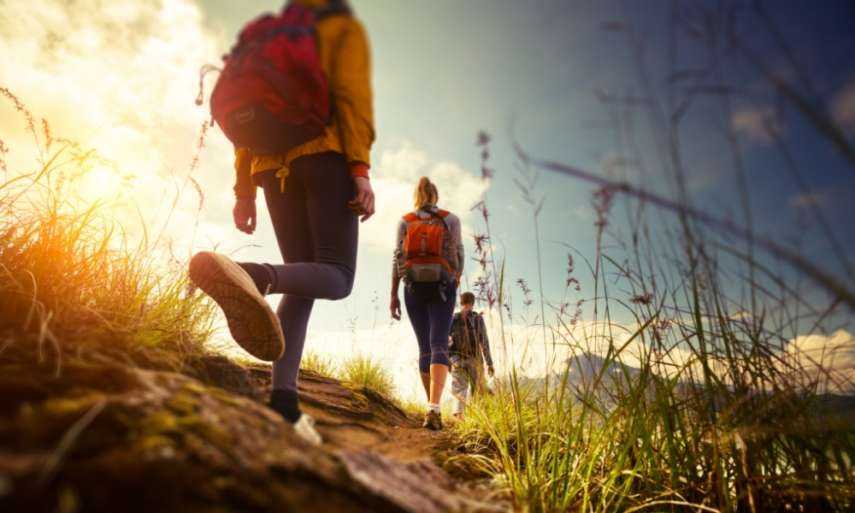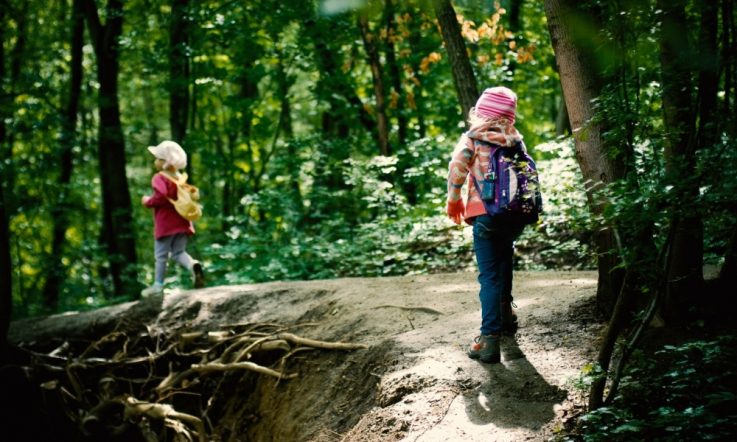This is an extract of an article originally published in the March 2011 print edition of Teacher.
Outdoor education programs – from school holiday expeditions to activities integrated as part of the curriculum – provide unique opportunities for students to develop a range of understandings and capabilities. Outdoor education encourages students to connect with nature, understand environmental issues, learn more about Indigenous culture, and acquire planning and risk management skills.
Reconnecting with nature
There is a growing concern on the part of youth specialists, educationalists, parents and the public that many young people are retreating into a virtual world and are losing contact with reality, leading to social dislocation and isolation.
Outdoor education provides the only opportunity in the education of young people to reconnect with the natural world, ensuring students learn to feel comfortable in nature both day and night, develop an understanding of natural history and systems, and are challenged to consider the role and place of humanity in the natural order of things.
In the semi-wilderness, forced to come to terms with the absence of mobile phone and internet reception, students even come to appreciate the lack of distraction, and have the opportunity to learn more about themselves and their relationships with others.
Outdoor education is in no way anti-technology – developments such as satellite telephones have made possible outdoor journeys that would have been too risky in the past – but outdoor education does enable students to evaluate the role of technology in modern life, with a particular emphasis upon how technology shapes our personal responses and relationships to the natural environment.
Immersion in the environment
Today’s young people, as they move into adulthood, will face momentous issues of responding to environmental degradation, climate change and the role of human activity in causing or exacerbating global warming.
Responses to environmental issues must be founded in students’ understandings developed across a range of disciplines and domains of learning. When geography and environmental science students go into the bush as objective scientific observers, they are learning important skills in scientific methodology – but they are outside looking in. Students in outdoor education are inside looking out. They are immersed in the environment. Their learning about the environment combines both affective and cognitive modes of acquiring knowledge – while immersed in the environment they are both building and analysing their own relationship with the landscape.
In our daily lives what all of us do in practice relates only in part to academic learning. What we do is driven also by emotive resonances and even spiritual relatedness. Western culture has historically seen itself as intruding on and subjugating nature. Young people need to understand themselves as part of nature, if they are to feel deeply the need to change our global lifestyle and practices in order to save the planet.
The assessment and management of risk
School leavers need to develop an awareness of risk, which they will have to face in their lives, especially between the ages of 15 and 24, and learn how to manage it. Outdoor activities necessarily contain an element of real risk. If there is no risk there is no challenge, and challenge is at the heart of outdoor education. It is the principal responsibility of the outdoor education provider to minimise risk, and students should be made aware of the risk minimisation planning and procedures which have and are being followed by the organisers as part of their own learning about risk.
Students also need to be able to assess their own level of competence as well as correctly to assess the hazards and the likelihood of changing levels of hazard in an environment; for example, if a group comes to a swollen river which they need to cross, there is clearly a risk which has to be assessed. It may be that a risky river crossing can only be avoided by an extra 20-kilometre walk in quite difficult terrain and an arrival at the destination two days late. The seriousness of the risk involved in crossing the river has to be assessed carefully as does the skill, experience and fitness of all members of the group. It then has to be weighed up against the effort and possible hazard involved in the 20-kilometre walk.
Risk assessment and management in the bush can be taught and learned and includes how judgements can be impaired by the influence of peer pressure, fatigue or haste. Outdoor education teaches risk assessment as a process in a safely monitored context, but one where real consequences are evident and feedback mechanisms are strong to facilitate effective learning. The provision of properly trained staff who are also educators accompanying each group is important from a risk minimisation point of view, but also so that students can be properly educated in coping with risk as and after they confront it.
The processes underpinning astute judgement are consistent, whether the setting is in the bush, at the beach, driving a car on a wet night, or at a party. There is real transfer of the lessons learnt in outdoor education to students’ wider and future lives.
Bush awareness in the adult population
It has been understood at least since the publication of Russel Ward’s The Australian Legend that white Australians were one of the most urbanised peoples in the world, but maintained the myth, at least before the changing of Australian society by post-war immigration, that they were really country people who were forced to live in cities and that their natural home was the bush. It is perhaps this heritage that has led to Australians’ love for the outdoors and the wish to lose themselves (sometimes literally) in it.
Unfortunately, the acquisition of bush skills, especially the assessment and management of risk, has not accompanied this view of Australians of themselves. A great many urban dwellers go bushwalking, climbing, abseiling, rafting and canoeing poorly equipped, without proper navigation and survival skills, with scant knowledge of weather conditions and of the fickleness of the weather and without telling anybody of their plans. A great many also swim, surf or boat without any real understanding of the risks involved.
The goal of bush awareness is that adult Australians should know how to enjoy the outdoors safely and how to survive when they find themselves at risk. Outdoor living skills, respect for the environment, navigation skills and survival skills can be taught in a classroom setting, but they do not become engrained in people without actual experience under guidance in the outdoors. Only outdoor education can provide this learning. It is irresponsible for an Australian education system not to ensure that every Australian entering adulthood has these necessary skills.
Other outcomes
The skills listed above can really only be developed through students’ participation in outdoor education. There are also, however, outcomes which are not unique and which can be achieved through other disciplines and activities, but which are best achieved through outdoor education.
Personal development
Students in the semi-remote wilderness are confronted by their inner selves. Isolation from every day circumstances for an extended period of time leads to self-reflection, and students begin to make realistic assessments of their own personal strengths and weaknesses. The need for truthfulness, charity, tolerance and modesty is reinforced by the close proximity over an extended period with others isolated from the rest of the world. It is difficult also to sustain inappropriate sexist or racist attitudes and other personal prejudices when forced to co-operate closely with others.
Students learn to analyse difficult circumstances, to appropriately endure hardship without complaint and to press on when the going is tough. Many realise that they can do better than they thought they could. They learn to make improved judgements and to develop coping strategies.
And, of course, nothing can compare with the wonderment of young people, sitting on the top of a mountain at dawn and surveying the landscape before them. Such experiences make young people aware of the power of silence and the true beauty of nature.
Group development
Teamwork is a major outcome of a great many aspects of school life, but unlike activities that are school-based, in the outdoors the consequences of a lack of teamwork are immediate and possibly dangerous. Students learn an understanding of the necessity for group endurance, where individuals gain strength from the group, and where the stronger help the weaker, the competent the less competent and the stoic the discouraged.
By binding a group together through successful common experience in challenging circumstances, outdoor education helps to create a positive school culture. When teaching staff accompany groups into the outdoors, students see staff as part of the team and acknowledge them as people.
Australia has one of the largest outdoor classrooms in the world. It is important that as a nation we recognise the unique student outcomes of outdoor education.
References
Ward, R. (1958). The Australian Legend. Melbourne: Oxford University Press.
This article is based on the paper Student Outcomes: The place of outdoor education in the national curriculum by Tony Hewison and Peter Martin.
For more on the Outdoor Education Group, visit www.oeg.net.au



